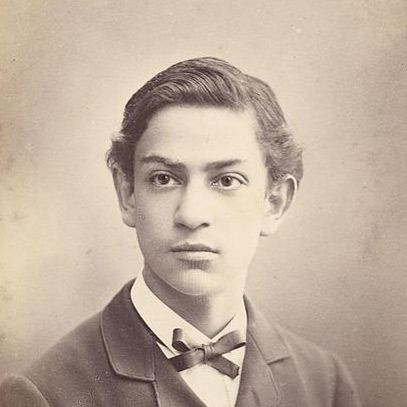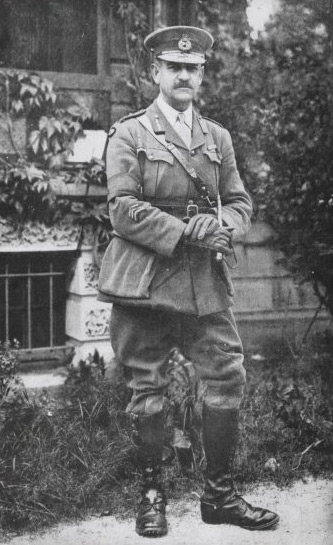John Monash
John Monash was born in Melbourne on 27 June 1865, the first son of Prussian migrants Louis and Bertha Monash. His grandfather was a well-known printer of Hebrew prayer books and his uncle was the famous Jewish historian, Heinrich Graetz, author of Graetz's History of the Jew.
Although Louis and Bertha largely abandoned religious practice in their new life in Australia, the young Monash joined the Jewish synagogue choir in East Melbourne and celebrated his bar mitzvah there when he was thirteen. To mark the occasion, his parents gave Monash a copy of his uncle's multi-volume book in French. The language presented no barrier to Monash, who was already fluent in three languages: German, French and English.
Monash was enrolled at Scotch College at the age of eleven. He matriculated at fourteen but returned for another year to be awarded equal dux for his outstanding performance. Going on to study engineering at Melbourne University, he was well known as an ambitious student, with a strong passion for learning. He took part in a wide range of social activities including chess, debating, theatre and music and was editor of the Melbourne University Review for nearly two years. When the university called for recruits to the 4th Battalion, Victorian Rifles, Monash was the first to sign up.
Following his mother's death in 1885, Monash abandoned his studies and eventually found a post on the construction of the Princes Bridge. Two years later, he joined the North Melbourne Battery, where his promotion to the rank of Major encouraged him to remain for another eleven years.
Monash married Hannah Victoria Moss in 1891. He returned to university the same year and completed his studies the following December. On 22 January 1893, Hannah gave birth to the couple’s first and only child, Bertha, named in honour of Monash’s mother.
With the outbreak of war in 1914, Monash was appointed to command the 4th Infantry Brigade of the Australian Infantry Forces. After a period of training in Australia, he set sail for Egypt on 22 December. At Gallipoli, Monash and his troops gathered at Pope’s Hill and Quinn’s Post and prepared for what was to become a miserable six month battle. He and his brigade remained at Anzac Cove up until the evacuation on 19 December 1915.
On the Western Front, Monash took command of the 3rd Australian Division and earned great renown as a tactician, dedicated to minimising casualties through rigorous training, detailed planning and strong technical and mechanical support of his troops.
The main thing is always to have a plan; if it is not the best plan, it is at least better than no plan at all.
Monash took charge of the Australian Army Corps in 1918 and in July that year, planned the Corps's involvement in the highly successful Battle of Hamel. ‘All over in ninety-three minutes…the perfection of teamwork' he wrote later. In recognition of his military achievements, Monash was knighted by King George V on 12 August 1918.
The Man on the $100 note
The $100 note featuring John Monash was first issued by the Reserve Bank of Australia in 1996. The designer, Bruce Stewart, based his portrait on a photograph of Monash taken for the Old Scotch Collegians' Club in 1912.
After overseeing the repatriation of the AIF in London, Monash returned to Melbourne where he was welcomed by an enthusiastic crowd on Boxing Day 1919. In the years that followed, Monash became General Manager, then Chairman, of the Victorian State Electricity Commission and was involved with a number of public organisations,
John Monash remained a much-loved public figure in Victoria until his death on 8 October 1931. His state funeral with military honours was attended by some 300 000 people and consisted of four battalions of infantry and six squadrons of Light Horse. He was buried with Jewish rites at Brighton Cemetery in Melbourne.



